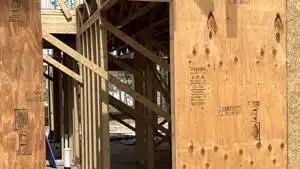News from the South - Alabama News Feed
No one knows whether Trump’s $50B for rural health will be enough
by Anna Claire Vollers, Alabama Reflector
July 20, 2025
Congress set aside $50 billion for rural hospitals and medical providers to allay fears over the billions more in historic cuts to federal health care spending that President Donald Trump signed into law on Independence Day.
But is that bandage big enough to save struggling rural hospitals?
“I have more questions than I have answers,” said Alan Morgan, CEO of the National Rural Health Association, a nonprofit policy group. “No one has those answers yet.”
GET THE MORNING HEADLINES.
Morgan noted that the new money for rural health, to be spent over five years, is far less than the $155 billion in rural Medicaid spending cuts over 10 years, as estimated by KFF, a nonprofit health policy and research group.
Experts, hospital leaders and lawmakers on both sides of the aisle fear that Trump’s signature legislation will particularly gut rural hospitals and clinics, which see an outsize share of patients who are insured through Medicaid, the federal-state public health insurance for people with low incomes. The new law slashes more than $1 trillion from Medicaid over the next 10 years to help pay for tax cuts that disproportionately benefit the wealthy.
The $50 billion addition was an effort by Republican leaders in Congress to win the votes of colleagues within their party who initially balked at supporting such steep cuts to Medicaid and other health services.
In the U.S. Senate, the rural program helped secure the vote of Alaska moderate Republican Sen. Lisa Murkowski, who expressed concern about the law’s impact on health care in her state. About 1 in 3 Alaskans are insured through Medicaid.
Jared Kosin, the president and CEO of the Alaska Hospital & Healthcare Association, said he’s deeply frustrated with the new law’s gutting of Medicaid funding, which he thinks will wreak lasting damage on Alaskans. And Republicans sidestepped potential solutions by just throwing money into a program, he said.
“It’s frustrating in the public realm when decisions like this are made fast and, frankly, carelessly,” he said.
“The consequences are going to fall on us, not them.”
More than half of the law’s cuts to funding in rural areas are concentrated in 12 states with large rural populations that expanded Medicaid under the Affordable Care Act to cover more people, according to KFF: Illinois, Kentucky, Louisiana, Michigan, Minnesota, Missouri, New York, North Carolina, Ohio, Oklahoma, Pennsylvania and Virginia.
Some GOP lawmakers in Congress have heralded the $50 billion rural program as a health care victory. But it’s still unclear which hospitals, clinics and other providers would receive money and how much.
How it works
The Rural Health Transformation Program will dole out $10 billion annually from fiscal years 2026 through 2030.
States must apply for their funding by the end of this year, submitting a detailed plan on how it would be used.
The law outlines some ways that states can use the money, according to an analysis of the legislation from the Bipartisan Policy Center:
- Making payments to rural hospitals to help them maintain essential services such as emergency room care or labor and delivery.
- Recruiting and training rural doctors, nurses and other health workers.
- Bolstering emergency medical services such as ambulances and EMTs.
- Using new technologies, including telehealth.
- Providing opioid use disorder treatment and mental health services.
- Improving preventive care and chronic disease management.
Half of the $10 billion each year will be distributed evenly across states that have applied for it. The other half can be distributed by the administrator of the federal Centers for Medicare & Medicaid Services — currently Dr. Mehmet Oz — at his discretion, based on a state’s rural population and rural health facilities.
Although the program doesn’t replace the amount states are likely to lose, Morgan said it’s still an opportunity to rethink how rural health care is funded. He’d like to see states given flexibility in how they’re able to use the funds, and he hopes they focus on keeping rural communities healthy through preventive care while still helping hospitals keep their doors open.
“If done correctly, it could really change the future course for rural America,” Morgan said. “That is such a tough ask, though.”
Hardest hit
Kentucky could take the biggest hit from the new law’s reduction in rural Medicaid funding, losing an estimated $12 billion over 10 years, according to a KFF analysis.
The state’s Medicaid department is still waiting for additional federal guidance to understand how the state’s program will be affected, Kendra Steele, spokesperson with the Kentucky Cabinet for Health and Family Services, told Stateline in a statement.
“Over 1.4 million Kentuckians rely on Medicaid — including half of all children in our state, seniors and more vulnerable populations — and the passage of legislation on the federal level will have serious impacts for those individuals, rural health care and hospitals and local economies,” she wrote.
Even with the new program, states across the country will have to reevaluate their budgets in light of the cuts, said Hemi Tewarson, executive director at the National Academy for State Health Policy, a nonpartisan group that supports states in developing health care policies.
“Every region is slightly different and there’s not a one-size-fits-all approach,” she said. “Hospital ownership varies [as well as] the types of services that are critical for the community where they’re located. They have to think about new ways to provide those services in a context with fewer resources.”
About 44% of rural hospitals are operating in the red, according to a KFF analysis of Rand Hospital Data, a higher share than the 35% of hospitals in urban areas.
‘Rural at heart’
Prior to the bill’s passage, Oz attempted to reassure U.S. House Republicans that their districts could get money from the program even if they weren’t specifically rural, Politico reported earlier this month.
We’re all rural at heart when it comes to money.
– Alan Morgan, CEO of the National Rural Health Association
Pennsylvania Republican U.S. Rep. Rob Bresnahan said money would begin flowing to his district as early as the beginning of next year, telling the Wilkes-Barre Times Leader earlier this month that he met with Trump, Oz and others to secure pledges that hospitals in his district could access the fund. He represents the northeastern corner of Pennsylvania, which includes suburban and rural areas, as well as the cities of Scranton and Wilkes-Barre.
Though the legislation includes guidelines on which facilities or areas qualify as “rural,” Morgan, of the National Rural Health Association, expects a mad dash from lawmakers and providers to claim rural status in order to get a piece of the funding.
“That’s going to be a huge issue — defining who’s rural,” Morgan said. “We’re all rural at heart when it comes to money.”
Stateline reporter Anna Claire Vollers can be reached at avollers@stateline.org.
Stateline is part of States Newsroom, a nonprofit news network supported by grants and a coalition of donors as a 501c(3) public charity. Stateline maintains editorial independence. Contact Editor Scott S. Greenberger for questions: info@stateline.org.
Alabama Reflector is part of States Newsroom, a nonprofit news network supported by grants and a coalition of donors as a 501c(3) public charity. Alabama Reflector maintains editorial independence. Contact Editor Brian Lyman for questions: info@alabamareflector.com.
The post No one knows whether Trump’s $50B for rural health will be enough appeared first on alabamareflector.com
Note: The following A.I. based commentary is not part of the original article, reproduced above, but is offered in the hopes that it will promote greater media literacy and critical thinking, by making any potential bias more visible to the reader –Staff Editor.
Political Bias Rating: Center-Left
The content provides a detailed critique of recent federal legislation that cuts Medicaid funding, especially highlighting its adverse effects on rural hospitals and health care providers. It presents concerns from health experts and policymakers, many of whom emphasize the insufficiency of allocated funds and the disproportionate impact on vulnerable populations. The article underscores the negative consequences of tax cuts favoring the wealthy at the expense of rural health funding, positioning itself by taking a more critical stance toward Republican-led budget decisions. However, it balances the narrative by including perspectives from moderate Republicans and bipartisan efforts, contributing to a center-left orientation that advocates for stronger support of public health without overt partisan demonization.
News from the South - Alabama News Feed
Amid opposition to Blount County medical waste facility, a mysterious Facebook page weighs in
by Lee Hedgepeth, Inside Climate News, Alabama Reflector
September 7, 2025
This article originally appeared on Inside Climate News, a nonprofit, non-partisan news organization that covers climate, energy and the environment. Sign up for their newsletter here.
ONEONTA — The names echoed down the halls of the Blount County courthouse Thursday morning like a child’s game of telephone.
“Darlene?”
One of the county commissioners was reading from a list of those who’d asked to speak at a public meeting concerning the potential approval of a medical waste treatment facility in nearby Remlap.
“Darlene,” a resident at the back of the room repeated to those outside. Community members opposed to the new facility, proposed by Harvest Med Waste Disposal, wouldn’t all fit in the boardroom where commission meetings are typically held. They also lined the hallways of the courthouse nearly to the building’s exit. One court employee said they’d never seen the facility packed with as many citizens. The woman’s name continued down the line.
GET THE MORNING HEADLINES.
“Darlene,” someone further outside repeated. “Darlene,” a final resident echoed.
One by one, community members from all walks of life—business owners, environmentalists, nurses, college professors, healthcare experts and retirees—made their way to the podium to tell their local elected officials in no uncertain terms: Remlap, Alabama, population 2,500, isn’t a dumping ground.
Those living and working in and around Remlap, about 20 miles northeast of Birmingham, have rallied in opposition to Harvest Med Waste Disposal’s proposed medical waste processing facility on Highway 75, a stone’s throw from the Jefferson County line. The enterprise, to be housed in a former tire shop, would sit just feet from Gurley Creek, part of the Black Warrior River watershed, and is located within a FEMA-designated flood zone, according to government documents.
Residents have been vocal in opposing the facility opening in Remlap, citing environmental and safety concerns. David Dyer, owner of Harvest Med Waste, has said many community members’ concerns are unwarranted. His company, he argued at Thursday’s commission meeting, will provide needed jobs in Blount County and bring a safe, environmentally friendly technology—ozone sterilization of medical waste—to Alabama for the first time.
While supporters at Thursday’s meeting included only Dyer’s lawyers, friends and business associates, Blount County residents have found themselves the targets of paid social media advertising in support of Harvest Med Waste, though it’s unclear who is behind the online campaign.
Both Dyer and a representative of Clean Waste Systems, a national company responsible for the sterilization technology Dyer’s facility plans to use, denied involvement with the advertising to an Inside Climate News reporter on Thursday.
“I’m not even on social media,” Dyer said.
Mountains of medical waste
Medical waste management is a more than $2 billion industry in the U.S., according to market analysts, and is projected to grow to over $3 billion by 2030. The Centers for Disease Control estimated that U.S. health care providers generate more than 3 million tons of such waste each year, including everything from used syringes and gauze to contaminated gloves and other personal protective equipment.
All that waste must go somewhere. Historically, incineration has been the primary method of disposal. More than 90 percent of potentially infectious medical waste was incinerated before 1997, according to the Environmental Protection Agency.
Since that time, other technologies have helped fill the need for medical waste disposal, including the use of autoclaves—machines that use pressurized steam to treat waste—and other sterilization technologies.
In the last decade, ozone sterilization has also become a growing technology, with proponents arguing that the method provides an environmentally friendly alternative to incineration, for example.
Clean Waste Systems, based in Maple Lake, Minnesota, is slated to provide the ozone sterilization technology for Dyer’s Remlap facility, pending its approval. The company uses a technology called “humidizone” to sterilize shredded medical waste, which can then be trucked to a run-of-the-mill landfill for disposal.
Kelly Prchal, CEO of Clean Waste Systems, was one of the handful of supporters of the project to speak during Thursday’s meeting.
“I want to clarify some misinformation,” Prchal told commissioners. Residents in the audience groaned. “Our system is fully enclosed, contained and designed to meet and exceed all federal and state environmental standards,” she said.
Many of the concerns expressed on Thursday weren’t about the sterilization process itself, but instead involved the location of the facility and the risks imposed by trucking of medical waste material into and out of Remlap.
Warren Allworth, a nearby resident who moved to the area from South Africa, cited frequent traffic accidents in the area as a concern.
“Anyone who’s ever driven in Alabama knows that people don’t know how to drive,” he said. The audience laughed. “I love y’all, but it’s the truth.”
When there was a recent traffic accident at the Dollar General across from the proposed site, he said, the truck involved remained in the ditch for days before it was removed.
“I dread the day it’s one of his trucks,” Allworth said, referring to Dyer.
Dale Spain, another resident, lives a few hundred yards from the development site along Gurley Creek. He’s now retired, having worked for UPS for more than 40 years. During that time, he said, he witnessed many, large scale accidents that left hazardous materials scattered along roadways.
“If there is an accident, which there will be, you’re putting all of the first responders at risk, all of the bystanders, all of the people trying to help. And if it’s a bad wreck, this stuff will be scattered everywhere, and they’ll have no clue how to deal with it. Bringing that in and through Blount County isn’t the right place to go.”
Paul Gilbert, who serves as chief of Remlap Fire and EMS, would be one of the first to respond if an accident involving a truck with medical waste were to occur. He said his greatest concern is the sheer amount of potentially hazardous material involved.
“They can do 400 pounds of medical waste an hour,” he said. “If you work an eight-hour shift, that’s 3,200 pounds of biohazardous medical waste. If you work a 40-hour week, that’s 16,000 pounds of biohazardous medical waste.”
Jim Braziel, an associate professor of English at the University of Alabama at Birmingham who lives in Remlap, put it simply: “We don’t want to be a dump for the surrounding counties,” he said. “We don’t want to be the processor for these materials for the surrounding counties or the state of Alabama or the world.”
Braziel and his wife, Tina Mozelle Braziel, a renowned poet who also spoke at Thursday’s meeting, built a glass cabin in Blount County by hand and wrote a book about the process.
At the end of his comments Thursday, Braziel addressed Dyer directly.
“We don’t want your facility here,” he said. “So why do you want to come here? Go somewhere else.”
Residents and environmental groups have also said that the facility’s location aside Gurley Creek, in a flood zone, poses unnecessary risks.
“An individual from Birmingham is planning to put a medical waste processing facility in South Blount County,” an environmental nonprofit, Friends of the Locust Fork River, said in a statement ahead of Thursday’s meeting. “The waste is billed as non-hazardous in the application for permit, but FLFR believes that medical waste picked up at hospitals, doctor’s offices, etc. and transported to Remlap is hazardous waste…a bio-hazard.”
Locating the processing facility next to Gurley Creek, then, puts the watershed at risk, the nonprofit argued.
“If a catastrophic flood should occur affecting the facility, the endangered Flattened Musk Turtle and Black Warrior Waterdog habitat could be greatly altered in a negative way,” the nonprofit’s statement went on. “If toxic waste enters the creek, the threatened Gurley Darter found only in that creek would be wiped off the face of the earth forever. FLFR believes the facility location is a stage for an accident waiting to happen.”
In his comments during the meeting, Dyer dismissed concerns about potential harm to the environment.
“The creek’s a non-issue,” Dyer said. “Why in the world would I invest millions of dollars if I was worried about flooding a creek where I’d be sued to the end of time and probably put in prison if I was dumping into a creek?”
An online mystery
Thursday’s county commission meeting hasn’t been the only venue for debate over the Remlap facility. An online petition opposing the facility has garnered hundreds of signatures, and residents have said they’ve been subjected to constant online advertising advocating for the business.
A Facebook page called “Blount County for Safe Waste Solutions” has run multiple paid advertisements related to the project and the underlying technology, according to records reviewed by Inside Climate News.
The page, launched in August, has run at least three paid advertisements in the days leading up to Thursday’s meeting.
“Being a good neighbor always matters. That’s why Clean Waste Systems are small, safe, and designed to blend right in with the community or facility in which they’re located,” one paid post said, in part. “People living or working nearby ozone processing facilities often don’t even know the system is operating, but they feel the benefit of cleaner, safer, sustainable waste management through a smaller carbon footprint.”
According to Facebook records, the person or group responsible for the page hasn’t yet completed the company’s identity verification process. A message sent to the page by an Inside Climate News reporter went unanswered.
Both Dyer and Prchal denied any involvement with the online advertising on Thursday.
‘We will fight’
After Thursday’s meeting, Mike D’Angelo, a local business owner, sat outside his business, located just a few yards from Gurley Creek and the proposed facility. He’s lived in Remlap for more than 50 years. For him, preventing the new development is about protecting a waterway that’s been a part of his life for decades. He said he’s watched the area flood many times over the years, with Gurley Creek’s waters lapping at the walls of the proposed treatment facility, which is visible from his business’ front door.
“My grandchildren play in that creek,” he said Thursday morning. “I’d like to keep it clean so they can continue to.”
D’Angelo and other residents present at the meeting said they don’t plan to back down in their opposition to the project, regardless of the commission’s ultimate decision when they vote on Oct. 2.
“We’re not going anywhere,” he said, his eyes glancing over at Gurley Creek. “We will fight.”
Independent Journalism for All
As a nonprofit newsroom, our articles are free for everyone to access. Readers like you make that possible. Can you help sustain our watchdog reporting today?
Alabama Reflector is part of States Newsroom, a nonprofit news network supported by grants and a coalition of donors as a 501c(3) public charity. Alabama Reflector maintains editorial independence. Contact Editor Brian Lyman for questions: info@alabamareflector.com.
The post Amid opposition to Blount County medical waste facility, a mysterious Facebook page weighs in appeared first on alabamareflector.com
Note: The following A.I. based commentary is not part of the original article, reproduced above, but is offered in the hopes that it will promote greater media literacy and critical thinking, by making any potential bias more visible to the reader –Staff Editor.
Political Bias Rating: Center-Left
This content leans center-left as it emphasizes environmental and community concerns regarding a proposed medical waste facility, highlighting grassroots opposition and potential ecological risks. The article presents skepticism toward corporate interests and government approval processes, common themes in center-left environmental reporting, while maintaining a factual and balanced tone without overt partisanship.
News from the South - Alabama News Feed
Attorney criticizes Lipscomb mayor's response to teens' arrest, alleges excessive force
SUMMARY: Attorney Jonathan Austin criticized Lipscomb Mayor Tonya Baldwin’s recent press conference addressing the arrest of three teens, calling it an attempt to justify excessive use of force. The teens, aged 14, 18, and 19, were arrested following a viral video showing their interaction with police after alleged neighborhood disputes. Austin disputes the city’s claims, stating the teens were new to the area and not involved in a reported shooting. He also alleges the police chief tried to make charges contingent upon deleting the video. The attorney is pursuing legal action but has yet to receive arrest reports or related documents from the city.
Attorney criticizes Lipscomb mayor’s response to teens’ arrest, alleges excessive force Subscribe to WVTM on YouTube now for …
News from the South - Alabama News Feed
Alabama state employee insurance board to seek more funding, benefit changes
by Anna Barrett, Alabama Reflector
September 5, 2025
In the face of rising insurance rates, Alabama will have to consider allocating more money to the state employees’ health insurance program while altering state workers’ benefits, the State Employees’ Insurance Board leader said during a meeting Wednesday.
Stephanie Azar, CEO of the board, told members of the executive committee that without increased state support or benefit changes, the SEIB would gradually go into debt over the next three years.
“The board has known for some time that there would be difficult decisions coming due to the health care inflation and the issues we may face,” Azar said. “I will say that any changes or any decisions that will be made should not occur at one time, or even in one year, but will require the board to remain open to the pathway over the next several years to ensure the plan remains financially strong while maintaining excellent benefits for the members.”
Azar also recommended the board authorize a withdrawal from the Retirees’ Trust Fund to address funding shortfalls in the coming months. Withdrawals are limited to 10% of the trust’s fair market value on the last day of the previous fiscal year, Azar said, which was $304.7 million. She recommended pulling the maximum amount allowed, $30.4 million.
“I think that is not a good practice to pull from the trust, but I think that this board is going to have to pull from the trust,” Alabama Finance Director Bill Poole said.
Azar said the last time money was taken from the trust was in fiscal years 2015 and 2016, also to address funding shortfalls. She also recommended that the board withdraw 5% of the trust at the end of FY26 if needed.
Although the $30.4 million will help, Azar said the $30.4 million will only pay for about three weeks of expenses.
“This was enlightening to me when I heard this, but SEIB spends a little over $10 million in a week,” Azar said.
The executive committee approved benefit changes to bring before the full board for a vote, including:
- Major medical calendar year deductible (from $300 to $350)
- Inpatient hospital stays (from $250 to $300 deductible, and from $25 to $50 copay)
- Emergency room visits (from no copay to $250 copay excluding accidents and $300 copay including accidents)
- Specialist and ER physician visits (from $35 copay to $40)
Azar said the changes would save SEIB up to $6.2 million per year.
Connie Grier, an elected active employee representative, convinced the executive committee to reduce Azar’s initial recommendation for an increased specialist copay of $50 down to $40.
“I feel like $50 for a specialist is going to discourage some people from going to a specialist,” Grier said. “There are a whole lot of specialists. I think people are actually seeing more specialists now than what we used to 10 years ago.”
Azar said that benefit change was the biggest driver of savings in its original form at about $3.7 million per year.
“It is still a very rich benefit program, even with benefit changes,” Azar said.
She also recommended increasing the per member per month rate from $1,025 to $1,175 for full-time employees, which the board will request from the Legislature when the 2026 legislative session begins in January. Azar said about 30% of the coverage is paid for by the state, $6% is from the employer, and 28% falls to the employee. The final funding decision will lay with legislators.
Earlier Wednesday, the Public Education Employees Health Insurance Plan board approved a rate increase request.
“The point is: health care costs are going up everywhere,” Poole said.
Faye Nelson, who chairs SEIB, said she would support the changes the board sought, but that there would have to be changes to premiums.
“The reality is, it’s going to be more of a cost to our employees either now or later,” Nelson said.
Alabama Reflector is part of States Newsroom, a nonprofit news network supported by grants and a coalition of donors as a 501c(3) public charity. Alabama Reflector maintains editorial independence. Contact Editor Brian Lyman for questions: info@alabamareflector.com.
The post Alabama state employee insurance board to seek more funding, benefit changes appeared first on alabamareflector.com
Note: The following A.I. based commentary is not part of the original article, reproduced above, but is offered in the hopes that it will promote greater media literacy and critical thinking, by making any potential bias more visible to the reader –Staff Editor.
Political Bias Rating: Centrist
This content presents a straightforward and factual report on the financial challenges faced by Alabama’s State Employees’ Insurance Board and the steps being considered to address rising healthcare costs. The tone is neutral, focusing on practical concerns such as benefit changes, fund withdrawals, and increased premiums without advancing a particular ideological stance or political agenda. The article emphasizes fiscal responsibility and the balancing act between maintaining benefits and managing costs, reflecting a balanced perspective commonly associated with centrist reporting.
-
News from the South - Louisiana News Feed6 days ago
‘They broke us down’: New Orleans teachers, fired after Katrina, reflect on lives upended
-
News from the South - Tennessee News Feed5 days ago
Tennessee ranks near the top for ICE arrests
-
News from the South - Missouri News Feed6 days ago
Missouri joins dozens of states in eliminating ‘luxury’ tax on diapers, period products
-
Mississippi Today5 days ago
Trump proposed getting rid of FEMA, but his review council seems focused on reforming the agency
-
Local News7 days ago
Today in History: September 1, Titanic wreckage found
-
News from the South - North Carolina News Feed6 days ago
NC Labor Day 2025: A state that’s best for business is also ranked worst for workers
-
News from the South - Alabama News Feed6 days ago
Alabama union leaders say they’re fighting for the state’s middle class
-
News from the South - Texas News Feed3 days ago
Texas high school football scores for Thursday, Sept. 4











































